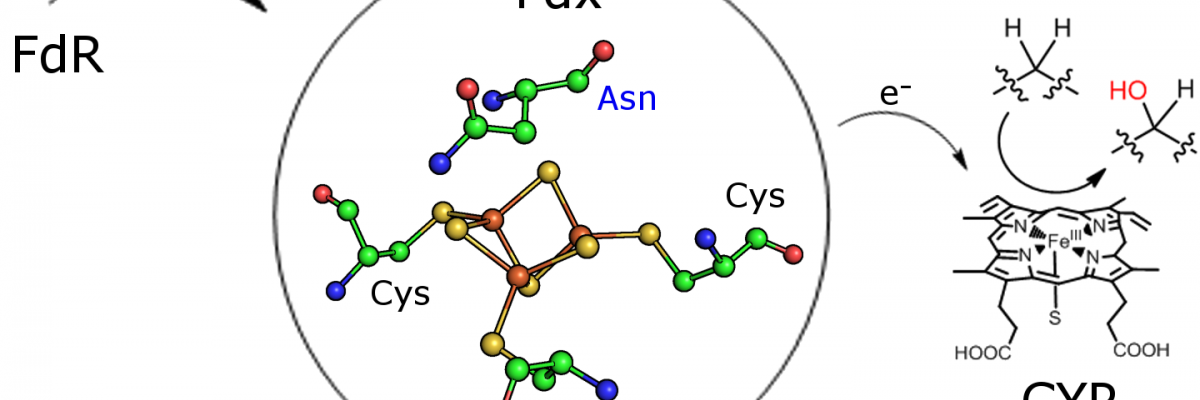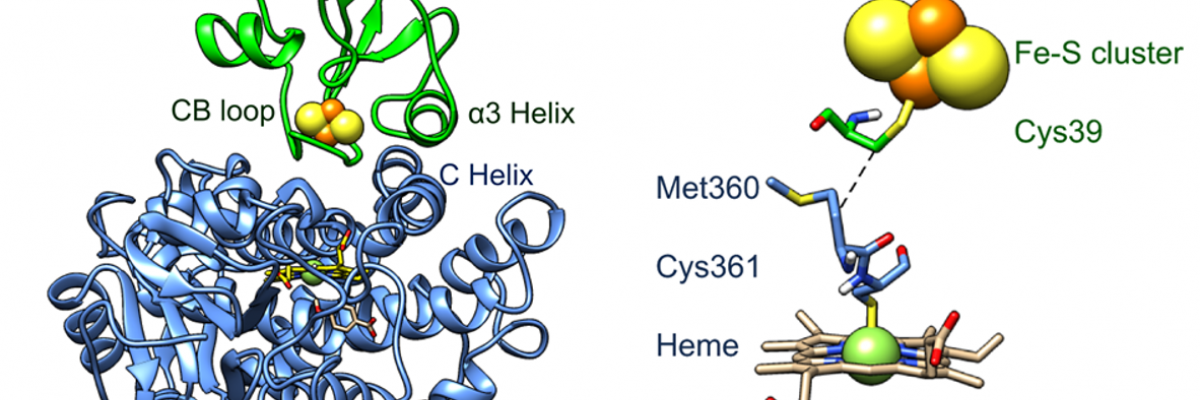Deciphering the catalytic potential & the electron transfer pathways of microorganisms
Electron transfer processes, which control the flow of cellular energy, are fundamental for all living organisms.
They are involved in respiratory processes to produce chemical energy within the cell, pathways to build large molecules from smaller substrates (anabolic) and the breakdown of molecules into smaller species for cellular metabolism (catabolic).
Microorganisms such as bacteria represent the most diverse branch of life being found in every environment on earth capable of supporting life.
Bacteria that can grow in different environments have evolved to utilize and synthesise a broad range of chemicals. The enzymes of bacteria which are involved in secondary metabolism are important biocatalysts for many important and new reactions. However knowledge of both the substrate and the electron transfer pathways is needed to understand their function and to expand their application as catalysts for the synthesis of complex chemicals such as biologically active natural products.
The electron transfer to the monooxygenases in bacteria is tightly regulated by ferredoxin (iron-sulphur cluster) proteins.
This honours project will unravel electron transfer processes important to these processes. You will study new enzymes and the associated ferredoxins from bacteria found in interesting environments (or genes from metagenomes) or which carry out novel reactions.

Project aims
The explosion of information from sequenced genomes and metagenomes has led to vast number of enzyme encoding genes to which no function has been assigned.
The aim of these projects is to delineate the role of enzymes from bacteria which have related but different amino acid sequences and to assess their potential as biocatalysts. Students will analyse bacteria of interest for potential gene candidates and isolate, purify and characterise the encoded enzymes and their associated electron transfer proteins in order to reconstitute activity.
This will lead to an understanding the roles of the complete systems in metabolism. This will utilise a range of biochemical and chemical techniques including protein crystallography, whole-cell biotransformations and analytical chemistry.
Techniques used
In the laboratory, honours students employ a number of chemical and/or biochemical techniques. Organic and analytical chemistry techniques are used for the production, isolation and identification of hydroxylated organics from enzymatic turnovers and whole-cell reactions via HPLC, GC, GC-MS and NMR.
Genome analysis and molecular biology (e.g. gene cloning, rational mutagenesis and directed evolution), protein production using Escherichia coli and protein purification are performed.
The inorganic metal centres of the enzymes and the electron transfer proteins are analysed using UV/Vis and other spectroscopies. Structural studies (X-ray crystallography) of the proteins are undertaken.
The structures provide important information on how the enzymes function and the protein-protein interactions which control electron transfer. Projects can therefore be designed to be compatible for those with an interest in chemical synthesis/analysis or in the biochemical aspects of the work.
Study honours in biological chemistry
The Bell Group investigates the enzyme complement of metabolically diverse microorganisms (microbiology) to discover functional systems with applications in biocatalysis (chemistry) and to understand their physiological function e.g. electron transfer proteins and enzymes in involved in secondary metabolism (biochemistry).
This research is critical to understand the role of enzyme across a broad range of disciplines including medicine (drug metabolism and interactions), fine chemical synthesis (flavour and fragrance and drug metabolite generation) and bacterial secondary metabolism (synthesis of complex bioactive natural products).
Supervisor
- Associate Professor Stephen Bell
- Research area: Electron transfer, protein chemistry, bacterial metabolism
- Recommended honours enrolment: Honours in Chemistry

